Welcome to our latest blog post, where we explore the world of Victorian elegance and how to capture the romance of the past in your own home. The Victorian era is known for its opulence, sophistication, and attention to detail, making it a popular choice for homeowners looking to add a touch of old-world charm to their interiors. In this post, we'll define Victorian style and take a closer look at its distinctive features. We'll also provide tips and inspiration for incorporating Victorian elegance into your home decor, from furniture and textiles to color palettes and accessories. Whether you're a history buff, a fan of period dramas, or simply drawn to the beauty of antique furnishings and ornate detailing, read on to discover how to bring the romance of the Victorian era into your modern-day home.
Hiring a professional interior designer when creating a Victorian style in your home can be beneficial in several ways. Firstly, an interior designer who specializes in Victorian style will have the knowledge and expertise to create an authentic and historically accurate design. They can guide you in selecting the right colors, fabrics, and furnishings to create the desired effect.
Secondly, an interior designer can help you strike a balance between modern and Victorian elements. They can help you incorporate modern amenities while still maintaining the overall Victorian feel of the space.
Thirdly, an interior designer can help you create a cohesive and harmonious design throughout your home. They can help you create a flow between rooms and ensure that all elements work together to create a unified design.
Overall, hiring a professional interior designer can save you time and money while ensuring that your Victorian-style home is beautiful and functional.
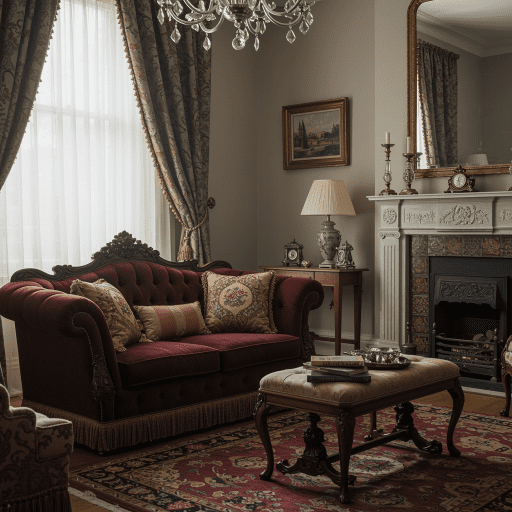
Characteristics of Victorian Style
Victorian style is known for its opulent and ornate design elements that evoke a sense of romance and nostalgia for a bygone era. Some of the most defining characteristics of Victorian style include the use of intricate details and decorations, a love for rich colors and luxurious fabrics, the incorporation of vintage and antique pieces, and an emphasis on symmetry and balance in design. From the elaborate wood carvings and moldings to the intricate wallpaper patterns and ornate furniture, Victorian style is all about embracing the beauty and grandeur of the past. By incorporating these key design elements into your home, you can capture the essence of Victorian elegance and create a space that exudes warmth, charm, and sophistication.
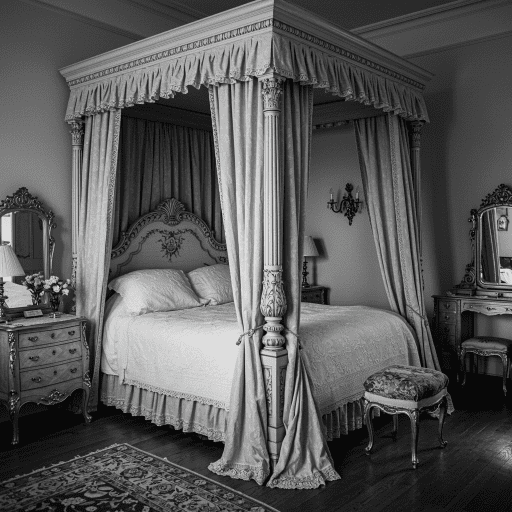
Color and Textures of Victorian Style
Victorian style is known for its rich, luxurious colors and textures, which contribute to the overall opulence and grandeur of the era. When it comes to colors, Victorian interiors often feature deep, saturated hues such as burgundy, emerald green, and navy blue. These bold colors are often paired with more neutral shades like cream or beige to create a balanced color scheme.
In addition to color, texture plays a key role in Victorian design. Fabrics such as velvet, silk, and brocade are commonly used to add texture and depth to upholstery, drapery, and bedding. These fabrics not only provide visual interest, but also create a sense of luxury and comfort.
Victorian interiors also incorporate patterned wallpaper and drapery to add an extra layer of texture and visual interest. Floral motifs, paisley patterns, and damask designs are common choices for wallpaper and drapery, and can be used to create a cohesive design scheme throughout the home. Overall, the use of rich colors and luxurious textures helps to capture the romance and elegance of the Victorian era.
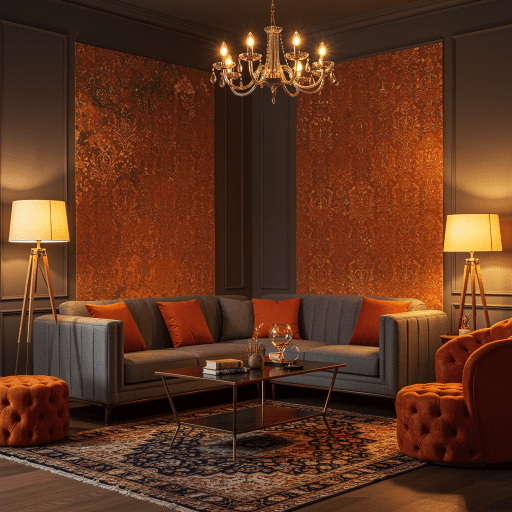
Victorian Style Room by Room
A. Living Room
- Furniture and decor options: ornate and carved wooden furniture, plush velvet or brocade upholstered seating, decorative throw pillows, tassels, and fringes.
- Tips for creating a cozy and elegant space: add a fireplace with a decorative mantel, use rich fabrics and textures for window treatments and area rugs, incorporate vintage lighting fixtures.
B. Dining Room
- Importance of a grand dining table and chairs: a large wooden table with intricate carvings, upholstered chairs with tassels or fringes.
- Incorporation of ornate china and glassware: display vintage and antique dinnerware and glassware, use ornate silverware and serving pieces.
- Decoration: Decorate the dining room with a chandelier or ornate lighting fixture, and add elegant drapery to the windows.
C. Bedroom
- Importance of a luxurious bed and bedding: use a four-poster bed with ornate carvings, add a canopy with curtains, use high-quality bedding with lace or embroidered details.
- Incorporation of vintage and antique pieces: use vintage dressers, wardrobes, or vanity tables with ornate carvings.
- Decoration: Decorate the bedroom with an antique chandelier or crystal sconces, and add luxurious curtains and drapes.
D. Bathroom
- Importance of a vintage clawfoot bathtub: add a vintage clawfoot tub with ornate feet, and use a vintage pedestal sink.
- Use of ornate fixtures and accessories: incorporate vintage faucets, mirrors with ornate frames, and decorative wall sconces.
These are just some ideas for each room, but the possibilities are endless when it comes to Victorian style décor.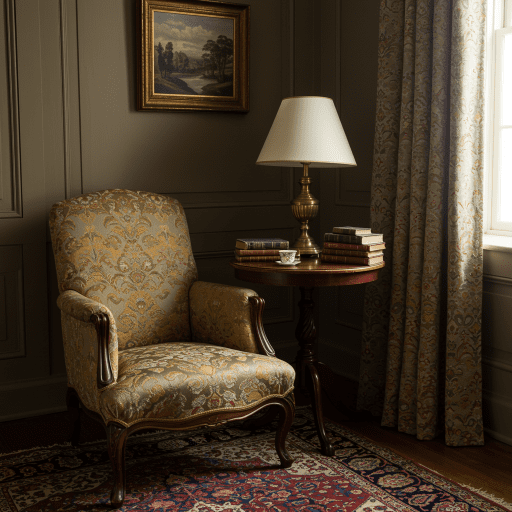
Incorporating Victorian Style into Modern Homes
Incorporating Victorian style into modern homes can seem daunting, but it can actually create a unique and charming look. The key is to find a balance between old and new elements. Here are some tips for achieving a modern Victorian style:
A. Mixing vintage and modern pieces: One way to achieve a modern Victorian look is to mix vintage and modern pieces. For example, you can pair a vintage chandelier with a modern coffee table or incorporate antique chairs into a contemporary dining room.
B. Emphasis on key Victorian elements like color and texture: Another way to bring Victorian style into modern homes is to focus on key elements like color and texture. Rich, deep colors like burgundy, navy, and forest green can add a touch of elegance to any room. Textured fabrics like velvet, silk, and brocade can also add a luxurious feel to furniture and decor.
C. Creating a harmonious balance between old and new: To create a cohesive and balanced look, it's important to choose modern pieces that complement the vintage elements. For example, if you have a Victorian-style sofa, you can pair it with modern throw pillows or a contemporary area rug to create a harmonious blend.
By mixing vintage and modern pieces, focusing on key Victorian elements like color and texture, and creating a harmonious balance between old and new, you can achieve a modern Victorian style that is both elegant and unique.
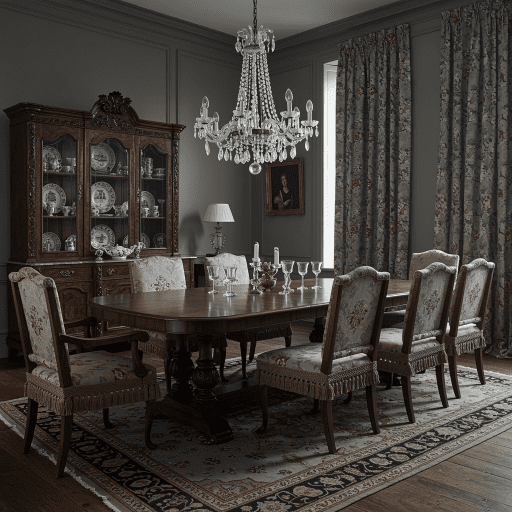
Conclusion
In conclusion, Victorian style is a timeless design aesthetic that evokes a sense of romance and opulence. The use of ornate details, rich colors and luxurious textures make it a perfect fit for those who desire a sophisticated and elegant home. By incorporating vintage and antique pieces and creating a harmonious balance between old and new, it is possible to seamlessly integrate Victorian style into modern homes.
We encourage you to try out Victorian style in your home by incorporating key elements such as deep colors, textured fabrics, and ornate decorations. Adding Victorian elements to your living room, dining room, bedroom, and bathroom can elevate your space to new heights of elegance and beauty.
Hiring a professional interior designer can also be a great investment when trying to achieve Victorian style in your home. Their expertise can help you create a cohesive and harmonious look that captures the romance of the past while still feeling fresh and modern. With the right guidance, you can create a Victorian-style home that is both timeless and uniquely your own.